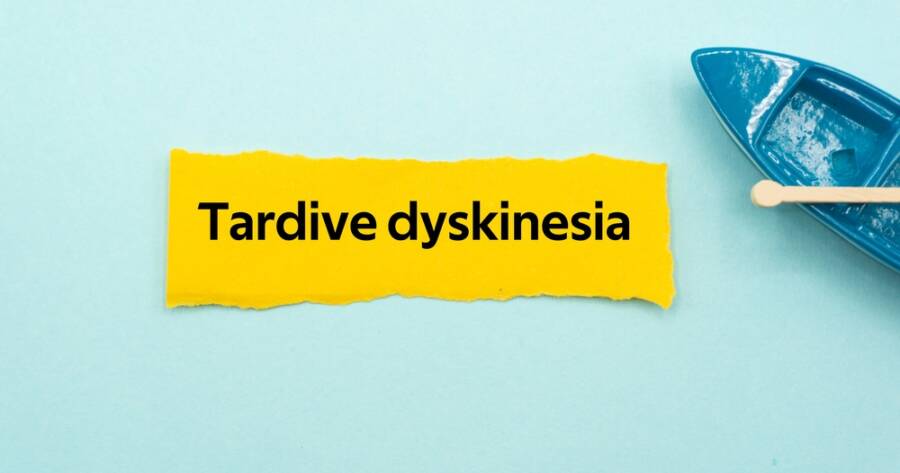Tardive dyskinesia (TD) is a movement disorder that causes involuntary, repetitive body movements and is commonly seen in patients who are on long-term treatment with antipsychotic medications. However, several other classes of medications with different mechanisms are also associated with TD. The condition can affect a person’s quality of life significantly. Peruse the symptoms, causes, and treatment options for tardive dyskinesia.
What Is Tardive Dyskinesia?
Tardive dyskinesia is characterized by repetitive, involuntary movements that are typically slow and rhythmical. The movements often affect areas like the face, including the lips, tongue, and mouth, as well as the arms, legs, and torso. Common symptoms include lip smacking, grimacing, tongue protrusion, rapid eye blinking, and jerking movements of the limbs or torso.
TD usually develops after prolonged use of certain medications, most commonly antipsychotic drugs. These medications, particularly older or first-generation antipsychotics (also known as typical antipsychotics), block dopamine receptors in the brain. Dopamine is a neurotransmitter that plays a key role in controlling movement, and its alteration is thought to contribute to the development of TD. Although TD is most often associated with antipsychotics, other drugs, including certain anti-nausea medications (such as metoclopramide) and mood stabilizers, have also been linked to the condition.
Symptoms of Tardive Dyskinesia
The symptoms of tardive dyskinesia are often subtle at first but become more noticeable over time. Individuals may not realize that they have developed the condition, as the movements are involuntary. The most common symptoms include:
- Facial Movements: These may include lip smacking, tongue protrusion, and grimacing. These facial movements are often the most noticeable and can make it difficult for individuals to speak or eat comfortably.
- Lingual Movements: The tongue may move involuntarily, which can lead to difficulties in speaking, swallowing, and chewing.
- Trunk and Limb Movements: Some people with TD experience jerking or writhing movements in their limbs, arms, or torso, which can make it challenging to perform basic tasks.
- Increased Blinking or Eye Movements: Rapid blinking or abnormal eye movements may also occur, which can be distressing and impact vision.
While TD primarily affects motor functions, it can have a profound effect on a person’s emotional and social well-being, as individuals may feel self-conscious or embarrassed by the involuntary movements.
Causes and Risk Factors
The primary cause of tardive dyskinesia is the long-term use of medications that affect dopamine receptors in the brain. However, several factors can increase the likelihood of developing TD:
- Duration of Medication Use: The risk of developing TD increases with the length of time a person has been on antipsychotic medications. Those who have been on these medications for months or years are more likely to experience symptoms.
- Type of Medication: Older, first-generation antipsychotic medications (e.g., haloperidol and chlorpromazine) are more likely to cause TD compared to newer, second-generation antipsychotics (e.g., clozapine and quetiapine). Second-generation antipsychotics tend to have a lower risk of TD.
- Age: Older adults are more likely to develop TD, with the condition being particularly common in elderly women.
- Underlying Health Conditions: Individuals with certain medical conditions, such as brain damage or neurological disorders, may be at higher risk.
- Dosage: Higher doses of antipsychotic medications increase the risk of TD, as well as rapid dose changes.
Treatment and Management of Tardive Dyskinesia
Although there is no cure for tardive dyskinesia, several treatment options can help manage the symptoms and improve a patient’s quality of life.
- Medication Adjustments: The first step in managing TD is often adjusting or discontinuing the medication that caused the condition. If antipsychotics are the cause, switching to a newer, second-generation antipsychotic or lowering the dose may help reduce symptoms.
- Medications for TD: Several medications have been approved or are used off-label to treat TD. These include:
- VMAT2 Inhibitors: Medications like valbenazine and deutetrabenazine are specifically designed to reduce involuntary movements associated with TD by modulating the activity of the dopamine transporter.
- Botulinum Toxin (Botox): In some cases, botulinum toxin injections may be used to target and relax the muscles affected by involuntary movements, particularly in the face and jaw.
- Anticholinergic Drugs: These medications can sometimes be helpful in managing the symptoms of TD, particularly when the condition is mild.
- Supportive Therapies: In addition to medication, physical therapy, speech therapy, and other rehabilitation techniques can help manage the functional limitations associated with TD. Support groups and counseling can also provide emotional support to help individuals cope with the social and psychological effects of the condition.
Managing Tardive Dyskinesia for Improved Quality of Life
Tardive dyskinesia is a challenging movement disorder caused by long-term use of certain medications, most notably antipsychotics. The involuntary movements associated with TD can significantly impact a person’s daily life, causing discomfort and emotional distress. However, with proper management, including medication adjustments and treatment options such as VMAT2 inhibitors or botulinum toxin injections, individuals with TD can find relief. If you or a loved one is experiencing symptoms of tardive dyskinesia, it is important to seek medical advice early to explore treatment options and improve quality of life.





